Charles Rennie Mackintosh.
It’s not a name I had actually heard of before I moved to Scotland, but now I’m so glad to have learned about who he is and I’m really excited to share more about him with you.
150 years ago this year, Charles Rennie Mackintosh was born in the city of Glasgow. He went on to become a renowned Scottish architect and designer and undeniably left his mark on the city. However, his designs are famous all over the world!
Travelling to different countries has a way of igniting our appreciation for the contrasts and characteristics that can make a place unique. I’m not just talking about dramatic landscapes and scenery, but also architectural style. Many of us would recognise a picture of iconic cities like Paris, London, or Venice due to their unique appearance.
But it’s not just these well-known places that can have recognisable designs that can change how we view our surroundings, but many smaller places too, including in Scotland.
The centre of Edinburgh has long been renowned as a beautiful example of historical architecture and culture, while Glasgow has been a bit of an enigma to many. It’s the kind of place you need to know a bit more about to really get. Like you need someone to show you around and explain its history, architecture and culture before you start falling in love with it.
I’ve spent the last year getting to know how awesome Glasgow is, partly thanks to one artist and architect in particular. I’m not an art or design connoisseur by any means and I never really seek out museums and galleries or particular buildings unless they are an integral part of a city. But Charles Rennie Mackintosh has had me travelling all over Glasgow to see his designs!
Who is Charles Rennie Mackintosh?
Charles Rennie Mackintosh had a talent for art and drawing that began as a young man. After winning awards for his drawings he secured an apprenticeship at an architectural firm while taking night classes at the Glasgow School of Art. He went on to be a part of many building projects around the city under architectural firms and then under his own name, working closely with his wife, Margaret MacDonald.
Born in Glasgow and having spent most of his life in the city, Mackintosh is considered the father of the Glasgow Style. It is his designs we still see around today and that people seem to resonate with and come to love.
What is the Glasgow Style?
From the 1880s art began to move away from historical styles to become more functional and inspired by nature. It began in Britain and was called Art Nouveau (new art). At the heart of Art Nouveau in architecture and furniture design was Charles Rennie Mackintosh and the Glasgow School.
The Glasgow School were a group that included The Four (Mackintosh, his wife Margaret MacDonald, her sister Frances and France’s husband Herbert MacNair), other women artists who now have the name the Glasgow Girls, and male artists who had strong ties to or studied in the city called the Glasgow Boys.
The “Glasgow Style” that this group developed was displayed by Mackintosh at international exhibitions and influenced the development of Art Nouveau across Europe. The style blended Art Nouveau with Japanese elements and symbolism and Mackintosh seemed to be at the forefront of it.
Materials like metal, wood, ceramics, stained glass and textiles that are less common today were used, often featuring roses and other flowers, Celtic designs, lines and squares, birds, and willowy female figures, all drawn in a particular stylised manner they was quite distinct from previous classical styles. Subtle colours like pink, purple and green were common and black and white were used to provide contrast.
When I first saw the style that includes straight lines and curves reminded me somewhat of Art Deco which is known on a wider scale. However, the Glasgow Style actually pre-dates this and technically has more of an arts and crafts element in comparison to the sleeker and more glamorous and clean cut Art Deco style. To me, it makes the Glasgow Style appear modern and ahead of its time.
In the case of Charles Rennie Mackintosh, the elements of the Glasgow Style were incorporated into notable buildings around the city. In particular, he won a bid to design a new building for the Glasgow School of Art, designed a series of tearoom interiors for notable local businesswoman Kate Cranston, and large private homes for local businessmen.
What was unique about Mackintosh and his use of the Glasgow Style was that he wanted to design every aspect, down to the smallest furnishings. He was strongly influenced by Japanese design and the way that furniture and design focused on the quality of the space and provided a calming influence, rather than being seen as an ornate display of wealth it has been previously in the west.
Why is he still relevant today?
At the time the work of Charles Rennie Mackintosh was largely underappreciated, apart from by a few patrons he designed homes for, and by Kate Cranston. He ended up moving away from Glasgow and focusing more on painting before his death in London in 1928. As is the way with many prominent artists, it was after his death that we truly came to appreciate his unique style and influence on the city of Glasgow.
A concerted effort has now been made to preserve, restore, and refurbish examples of Mackintosh architecture around the city, and to display his artwork for more people to see and appreciate. Over the past year, as I’ve learnt more and more about Mackintosh, I’ve come to realise what an integral part he now is of Glasgow, and I don’t think that any visit to the city is complete without at least understanding and viewing some of what he accomplished.
On the invitation of People Make Glasgow, I recently returned to the city to undertake a self-guided tour of Mackintosh sites, and I want to share with you how to create your own Mackintosh tour of Glasgow, and the top Mackintosh sites to see!
I always travel over to Glasgow via the train because I find it the easiest way to get from city centre to city centre and it takes less than an hour. This trip was no different and I was excited to jump on a Scotrail service early one morning to begin the Mackintosh adventure. If you’re coming in to Glasgow Central train station or walking nearby (like when you go to The Lighthouse) pop into Gordon’s St Coffee and try their special Mackintosh Blend coffee to get you in the mood for your explorations!
Even if you’re not a huge art or architecture lover, it’s hard not to appreciate the work of Mackintosh, plus these are some of the best places to visit in Glasgow and can easily be seen as you wander about the rest of the city.
A Self-Guided Mackintosh Tour of Glasgow
The map below shows all of the locations of the architecture in Glasgow attributed to Mackintosh. Depending on how much time you have in the city you could conceivably see all of it, or choose a few that are of most interest to you. I’ve often found having a deeper reason to explore a city, like seeking out filming locations or particular historical places has made the experience better, and I feel like using Mackintosh as your catalyst to explore Glasgow is a great way to get to know the city!
I’ve detailed each Mackintosh site below to help you choose what to see. The first three are my personal favourites and I would definitely recommend fitting them into your Glasgow itinerary.
The Lighthouse
The Lighthouse is the perfect place to start your explorations of the city and learn about Mackintosh as it’s located in the heart of Glasgow, in a lane just off Buchanan Street. The building was designed by him for the Glasgow Herald but it is now Scotland’s Centre for Design and Architecture. In the Mackintosh Interpretations Centre, you can find details about Mackintosh and his work to get you started.
There is also a current exhibition by the National Trust for Scotland about Hill House, a house that Mackintosh designed in Helensburgh that is currently undergoing renovation, meaning the interiors are being kept at The Lighthouse.
And don’t miss climbing the spiral staircase for views across Glasgow from the top of the tower!
The Lighthouse is free to enter.
Afternoon Tea at Mackintosh At The Willow
I’m particularly partial to an afternoon tea, with the atmosphere playing a large part in whether I consider somewhere good or not. Kate Cranston was a Glasgow businesswoman who was a prominent figure in the development of tea rooms (I like her already) and became a patron of Charles Rennie Mackintosh. What made her tea rooms so popular was her attention to service standards and a welcoming atmosphere, cleanliness and high food quality, and in employing the latest styles of decoration.
Enter, Mackintosh, who after working with another designer on Miss Cranston’s new tea rooms in Buchanan Street, went on to design the Willow Tea Rooms and also did further work on other tea rooms. Unfortunately, Miss Cranston later sold her tea rooms and they went into liquidation by the 1950s to be transformed into other stores and shops.
In July 2014 the Willow Tea Rooms Trust purchased the building in Sauchiehall Street that held Miss Cranston’s original Willow Tea Rooms. After an extensive refurbishment and restoration, including recreating original elements down to the finest detail, Mackintosh At The Willow has been reopened as a tea room with a visitor centre and exhibition next door.
There are two levels where you can enjoy breakfast, lunch, or afternoon tea, as we did during our visit. Or, you can pay an extra £5 (the equivalent of the 1p that Miss Cranston charged) to dine in the Salon de Luxe, a stunningly gorgeous room that was originally for ladies to enjoy their tea in private.
It was quite surreal sitting in a place surrounded by the designs of Mackintosh as he would have intended them to be over 100 years ago. It really is a calming and enjoyable atmosphere. The afternoon tea was lovely, with sandwiches, delicious scones and an assortment of sweet treats all served on specially designed china. I’ll definitely be back and splashing out for the Salon de Luxe to try that out too!
Please note to avoid confusion, although there are Willow Tea Rooms on Buchanan Street these are inspired by the original, and the newly opened Mackintosh on the Willow is the site of the original tea rooms, including original features that were preserved even as the building changed hands over the last half-century.
Kelvingrove Art Gallery & Museum
A visit to Glasgow wouldn’t be complete without going to the Kelvingrove Art Gallery & Museum. It is among the top 15 most visited museums across the world, and I prefer it even to the National Museum of Scotland! There are 22 different galleries but the one you should be most concerned about if you’re on the Mackintosh tour is the one dedicated to the Glasgow Style.
Kelvingrove is free to enter.
Mackintosh House at the Hunterian
Just a short walk from Kelvingrove you’ll find the University of Glasgow (which looks straight out of Harry Potter!) and the Hunterian, the oldest museum in Scotland. In addition to a museum and art gallery, it contains Mackintosh House, a replica of the interior of 6 Florentine Terrace where Charles Rennie Mackintosh and his wife Margaret MacDonald lived. I’m not sure I could handle all that white carpet!
Mackintosh House is £6 to enter (£3 for concession and free for students and some other groups) although other parts of the Hunterian are free.
Scotland Street School Museum
Scotland Street School was the last public commission by Charles Rennie Mackintosh, designed between 1903 and 1906. You can spot many unique features in the building within the windows and the stonework. Unfortunately, he battled with the School Board as they wanted a less expensive design.
It was used as a school right up until 1979 when a declining roll saw it closed. Now you can visit it as a museum that depicts 100 years of education in Scotland, with classroom recreations and information about schooling from Queen Victoria through to the 1950s and 60s.
Entrance to the Scotland Street School Museum is free. It can be reached in a short walk from the West Street Subway station.
House for an Art Lover
House for an Art Lover in Bellahouston Park was built between 1989 and 1996 but was based on a 1901 design by Charles Rennie Mackintosh and Margaret MacDonald. There are gallery and exhibition spaces, as well as an events venue popular for weddings (there was a wedding the day we visited!) and a popular cafe downstairs.
It’s a beautiful setting within the park, especially on a nice day, and a great opportunity to view and interact with Mackintosh designs not in a museum. The lunch was delicious too!
The cafe and shop are free to enter. The Mackintosh rooms are £6 for adults but opening times vary based on what events are being held so check the website for details.
Mackintosh/Queen’s Cross Church
The Queen’s Cross Church was the only church building to be designed by Mackintosh. The design, completed in 1899, has Gothic elements but with the added Mackintosh characteristics in the floral motifs of the windows.
The church was decommissioned in the 1970s and is now owned by the Charles Rennie Mackintosh Society. Sometimes the church is closed for private events like weddings, so check in advance before you head there!
Ruchill Church Hall
Located near to the Queen’s Cross Church, the Ruchill Church Hall was a small work designed by Mackintosh. It includes two halls and committee rooms that are used by the adjacent church, not built by Mackintosh.
Mackintosh Mural
The Clutha Bar 167 Stockwell Street
Glasgow is well-known for its street art, with many stunning pieces throughout the city. One of the latest additions is the giant 60x40ft mural of Charles Rennie Mackintosh above The Clutha. It was designed and created by Art Pistol Projects and Rogue-one, a well-known Glasgow Street artist, after being commissioned by the Radisson RED.
Glasgow School of Art
You may be wondering why I haven’t mentioned the Glasgow School of Art, the jewel in Mackintosh’s crown so to speak.
The Glasgow School of Art was founded in 1845 and by 1885 had expanded so much they required a new building. A competition was run to choose the architect and it was Charles Rennie Mackintosh’s design, under the firm of Honeyman and Keppie, that won. However, the design was much more ambitious than the budget allowed and so it was decided just some of the building would be constructed before funds were sought for the rest.
The central and east parts of the building were completed by the end of 1899. It was a further 10 years before the west wing was completed, during which time Mackintosh revised his designs quite extensively, leading to a more dramatic finish.
Unfortunately, in May 2014 a fire broke out that extensively damaged the west wing and some of the studios, Library, and archives. The wooden elements of the design and open spaces contributed to the severity of the fire.
Painstaking restoration work began in 2016, but disaster struck again in June 2018 when an even more damaging fire broke out within the building, resulting in widespread destruction and later partial dismantling of the building due to instability. At the moment the future of the Mackintosh Building is in doubt, as no major decisions have been made regarding whether it can be saved or what can be done to restore it.
Glasgow Art Club
The Glasgow Art Club was founded in 1867 and continues to operate as a meeting place for artists and lovers of art. Although the club is private it is possible for the public to visit when an exhibition is on, or through a pre-arranged guided tour.
In 1893 two townhouses on Bath Street were transformed for the Art Club by Honeyman & Keppie architects, who employed Charles Rennie Mackintosh. He painted a frieze and designed elements of the gallery. Unfortunately after water damage the original frieze around the gallery was plastered and painted over, but it has recently been recreated and is a delight to see.
Daily Record Building
Occupied by the Daily Record until the late 1930s. It is located between two lanes west of Drury Street and has a more colourful facade than many other Mackintosh buildings. There is a cafe on the ground floor, but the rest of the building is not open to the public.
The Hill House
Located about an hour from Glasgow in Helensburgh is Hill House, designed by Mackintosh and his wife for Glasgow book publisher Walter Blackie, from the buildings right down to the textiles. Unfortunately, Hill House has not withstood the test of time due to the difference in materials used and the exterior has sustained extensive water damage.
The National Trust for Scotland has now decided to encase the entire house in a transparent box in order to save the design. It is currently closed for visitors but you can see the exhibition at The Lighthouse with many of the interiors.
Mackintosh Club
Also in Helensburgh, the little-known Mackintosh Club is a building designed by Mackintosh when he was just 25 and still working for Honeyman & Keppie. It was formerly a billiard and committee room but has now been transformed into the Mackintosh Club by architects Bruce and Nicola Jamieson.
The upper floor is a large open space said to resemble Mackintosh’s later designs for the School of Art. It is used as a gallery and pop-up venue and can be hired for private events.
Martyrs’ School
An early Mackintosh design from around the same time as the Glasgow Herald Building that is now The Lighthouse, the Martyr’s School has decorative finishes and Japanese influences in the inner stairwells. It is not open to the public but you can see the outside from the top of the high street. Coincidentally, it’s built on the street Mackintosh was born on!
Planning your trip to Glasgow
I would recommend two days in Glasgow at the very least, and preferably more! To see even my favourite Mackintosh sites would take the better part of a day, not to mention all of the other awesome things to do in Glasgow. We stayed at the brand new Ibis Styles which is really central and a great base for exploring the city.
Read more:
I was invited to explore the Mackintosh sites by People Make Glasgow, but as always, all opinions are my own.

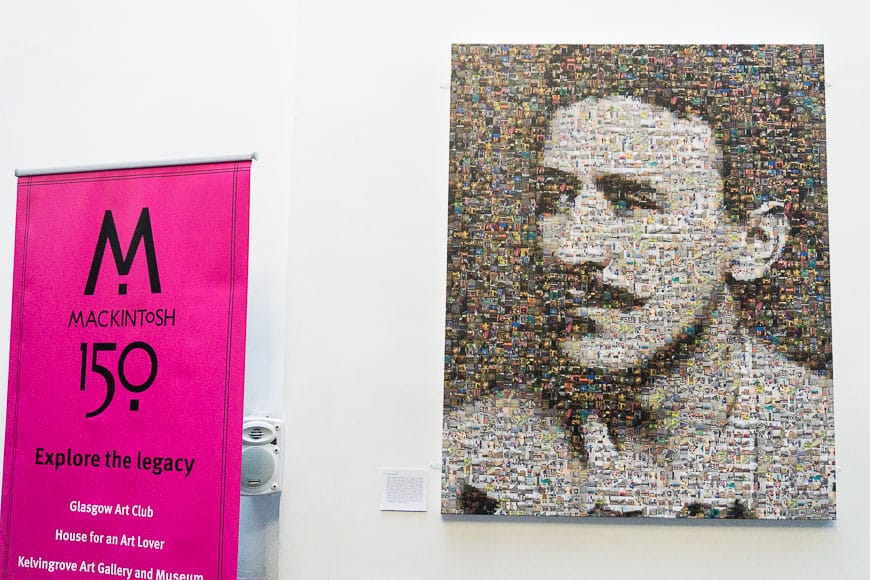
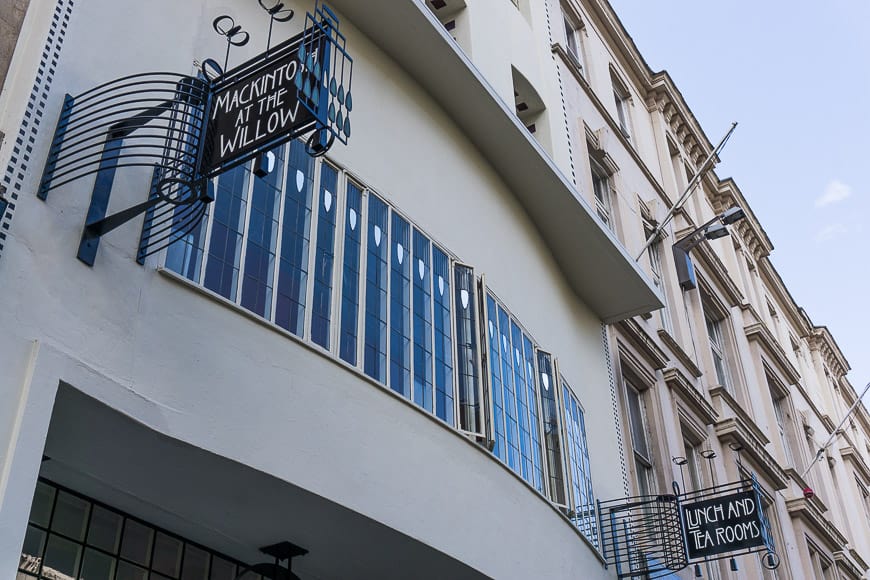
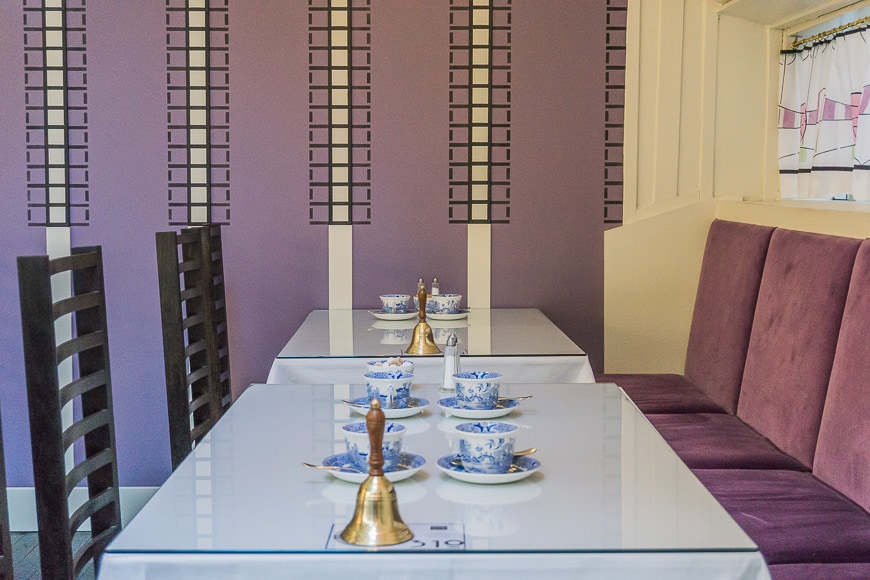
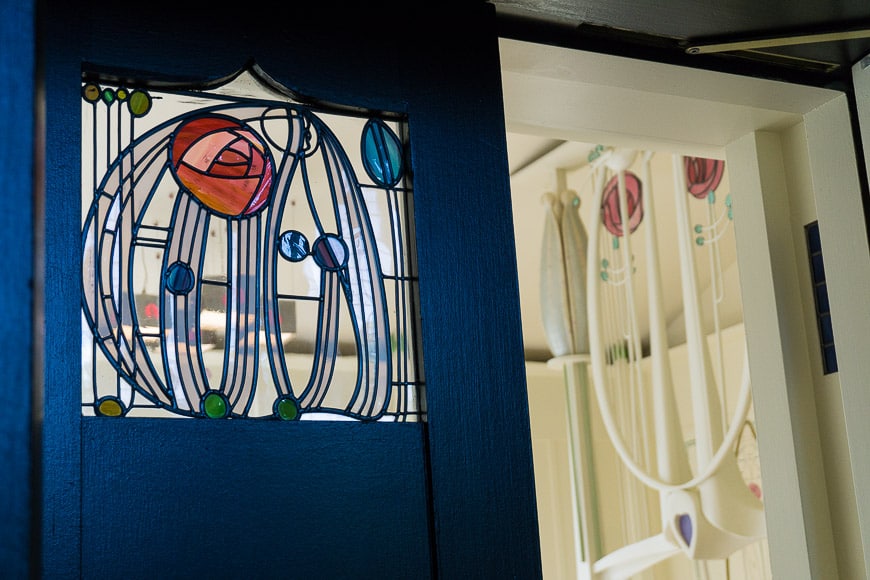
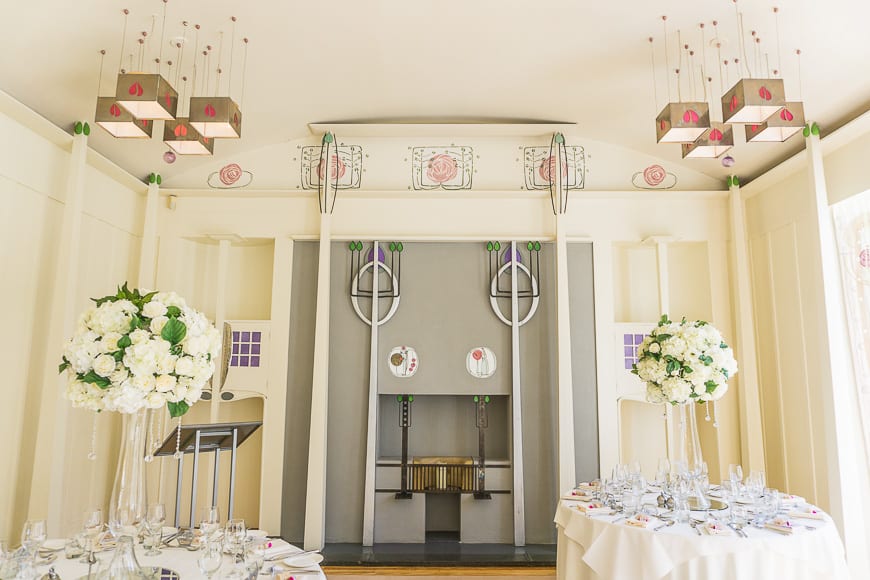
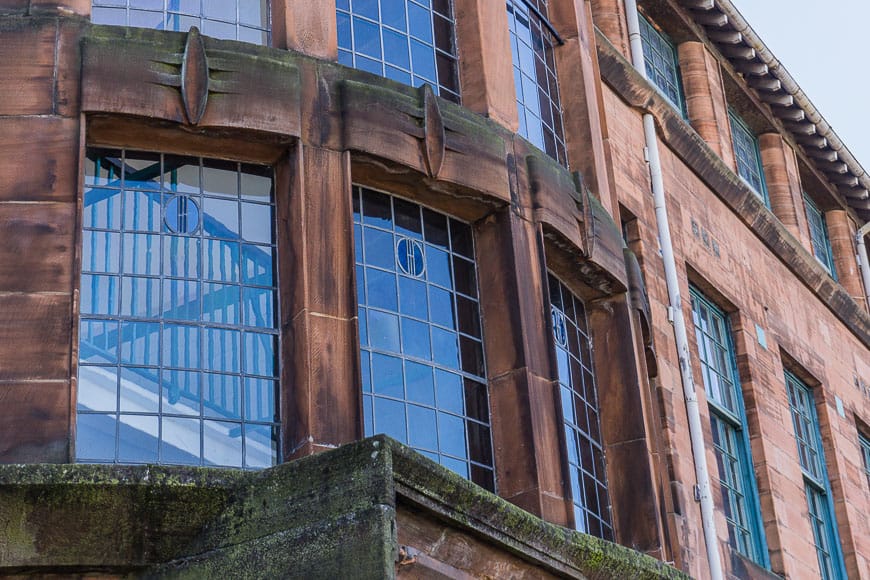
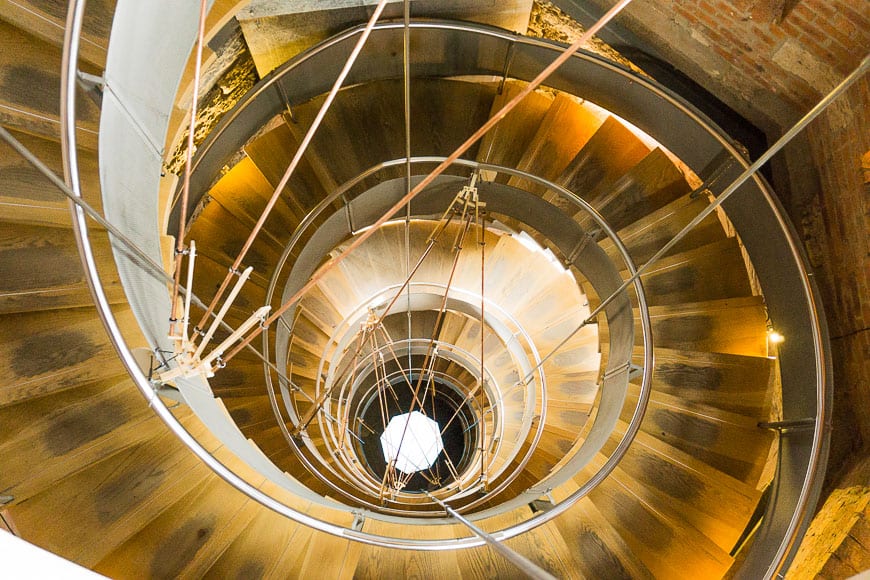
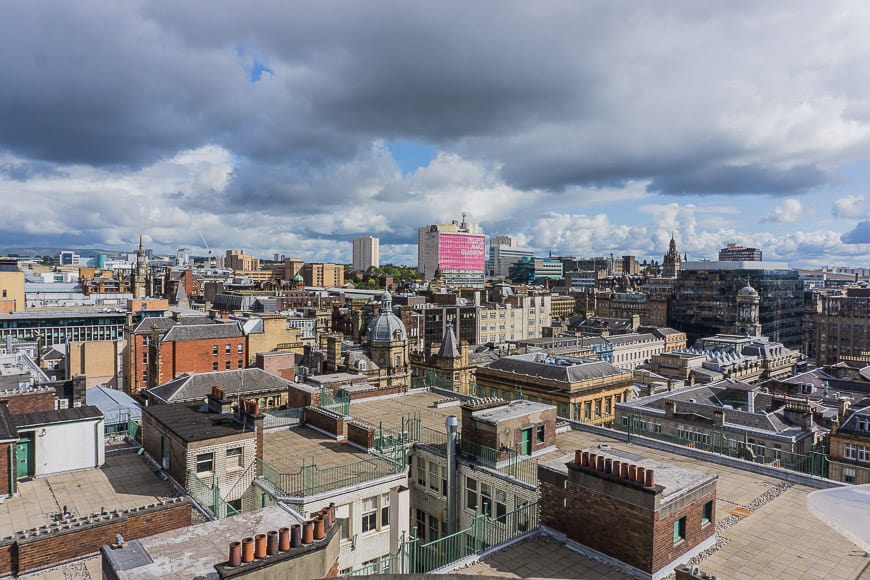
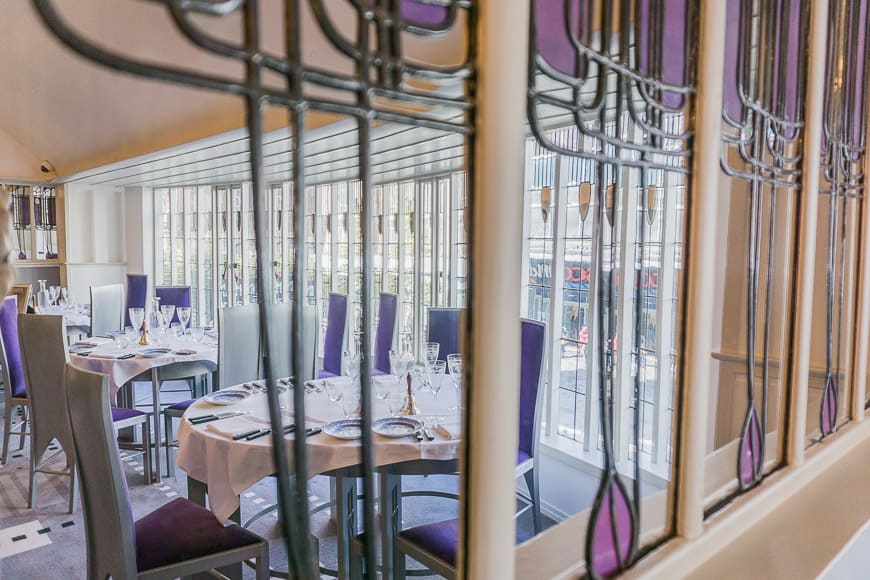
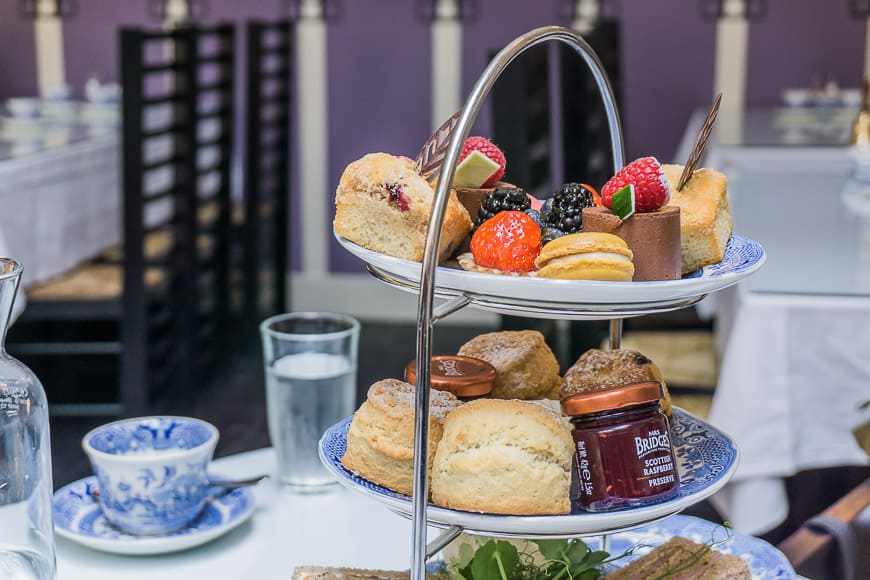
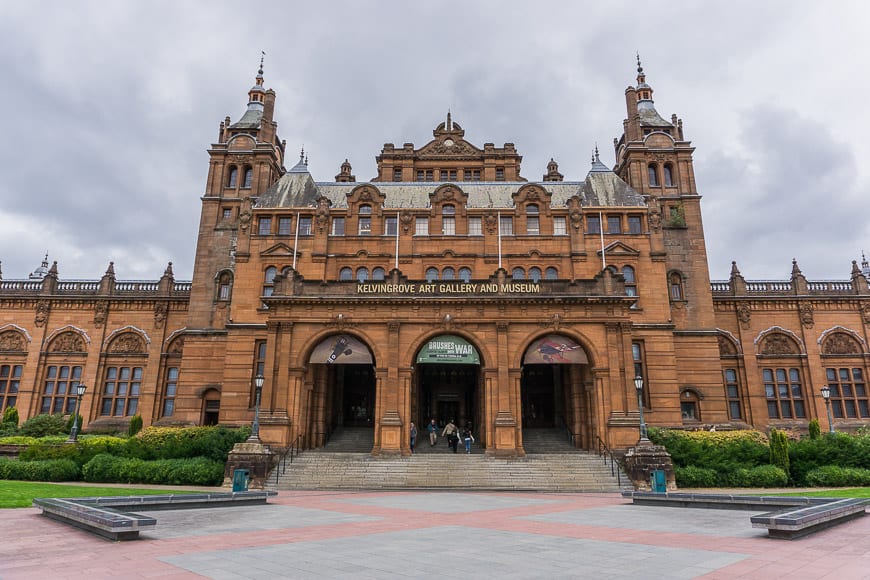
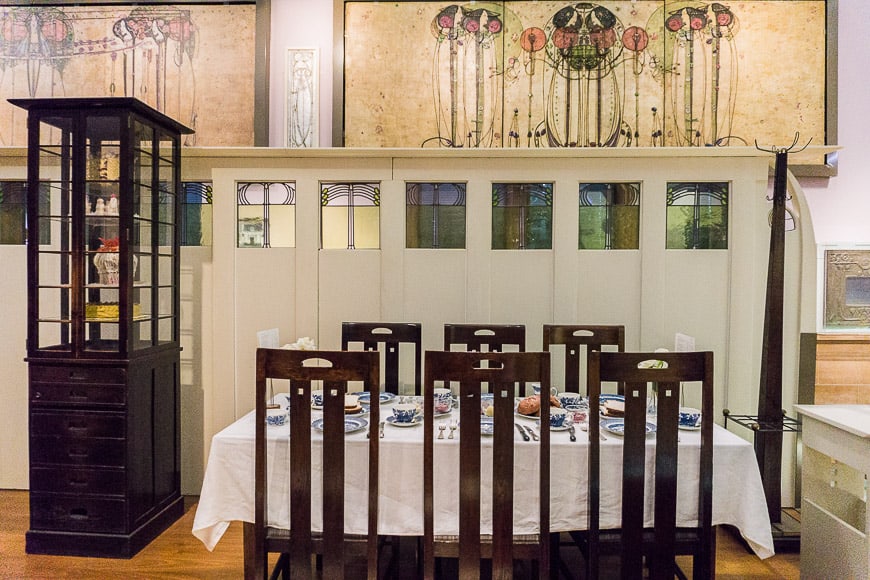
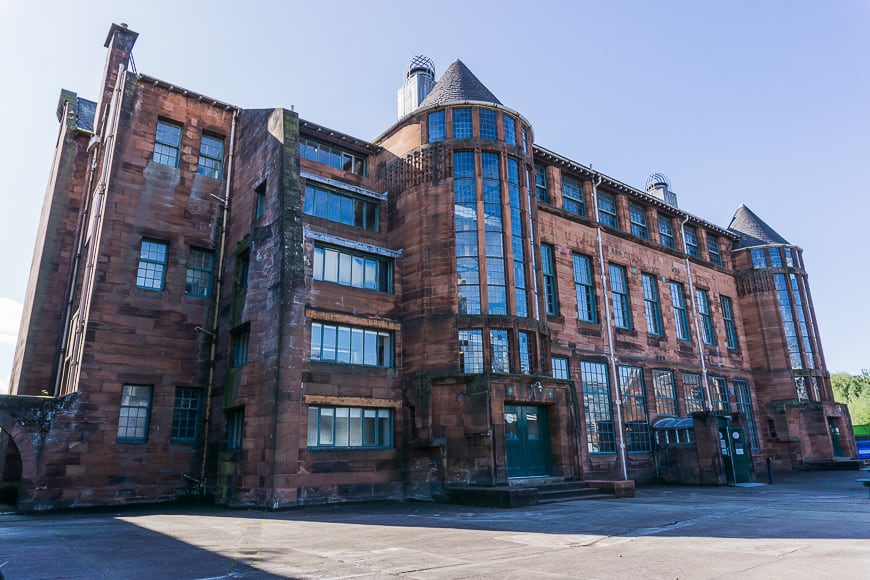
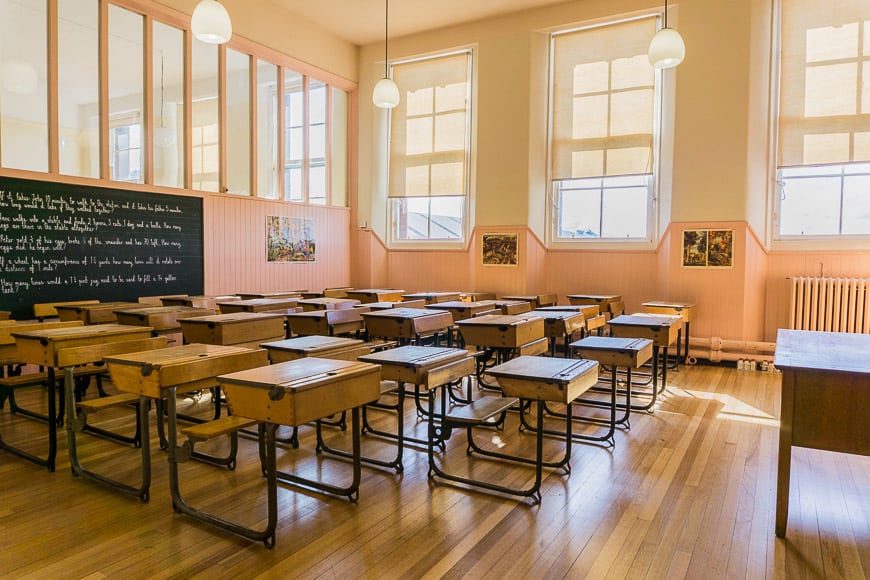
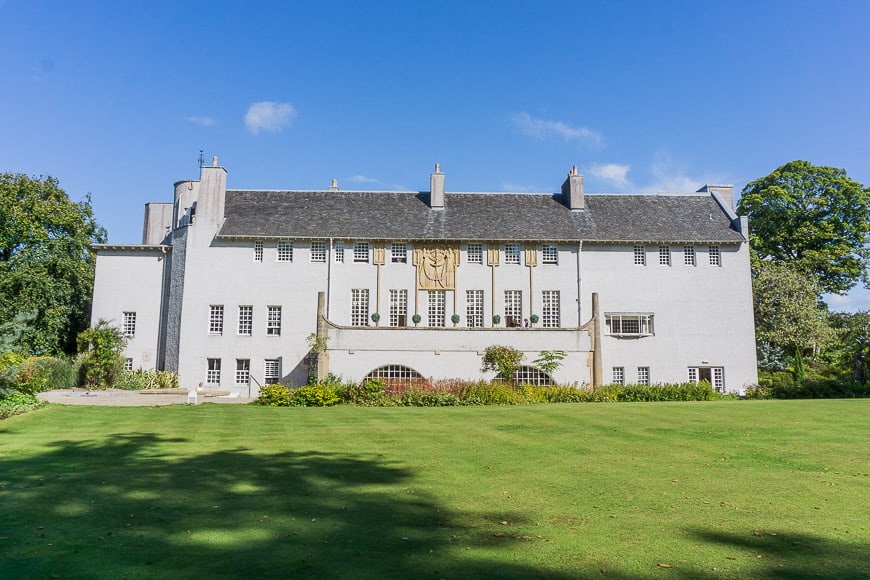
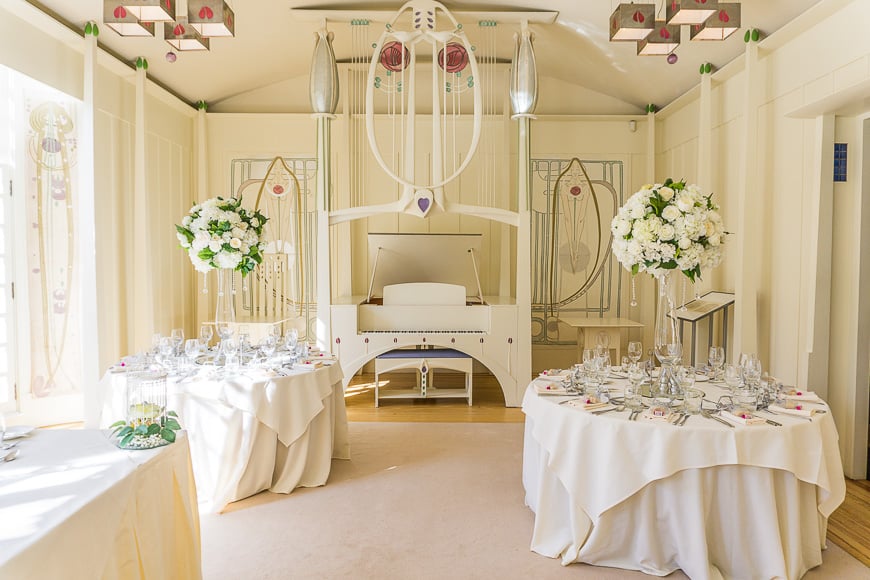
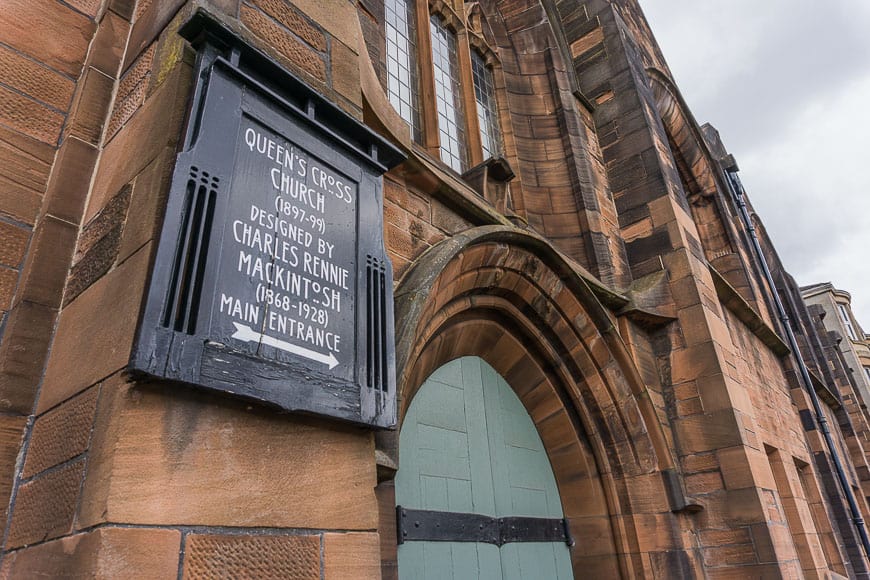
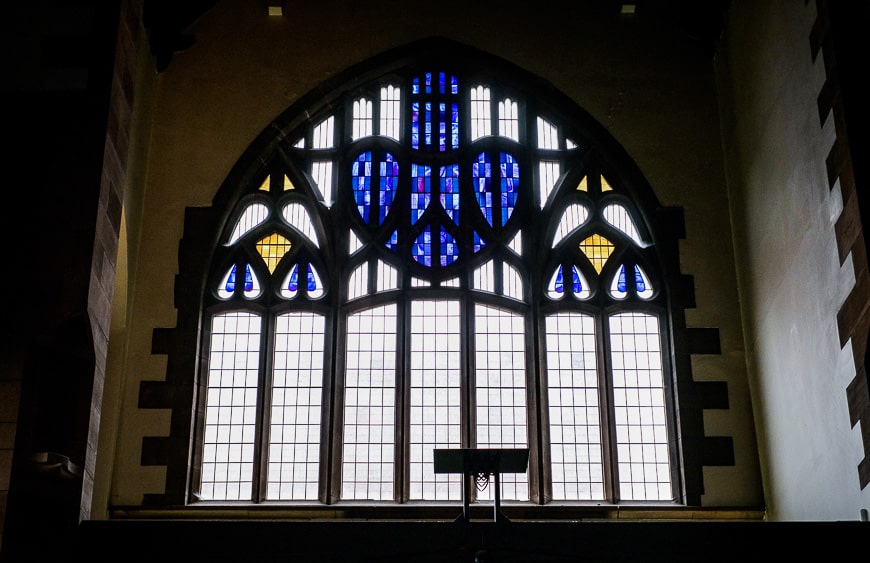
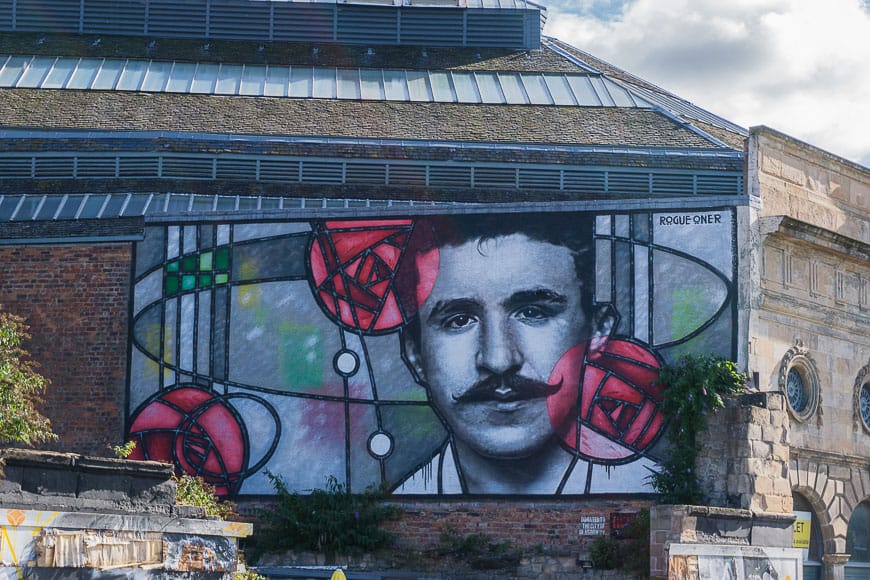
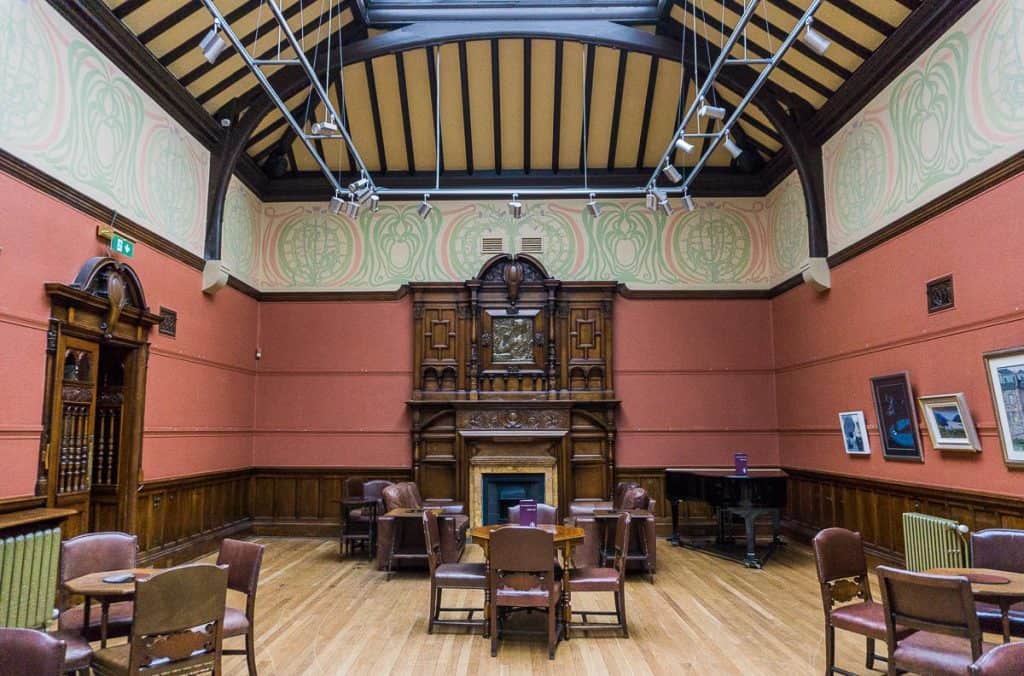
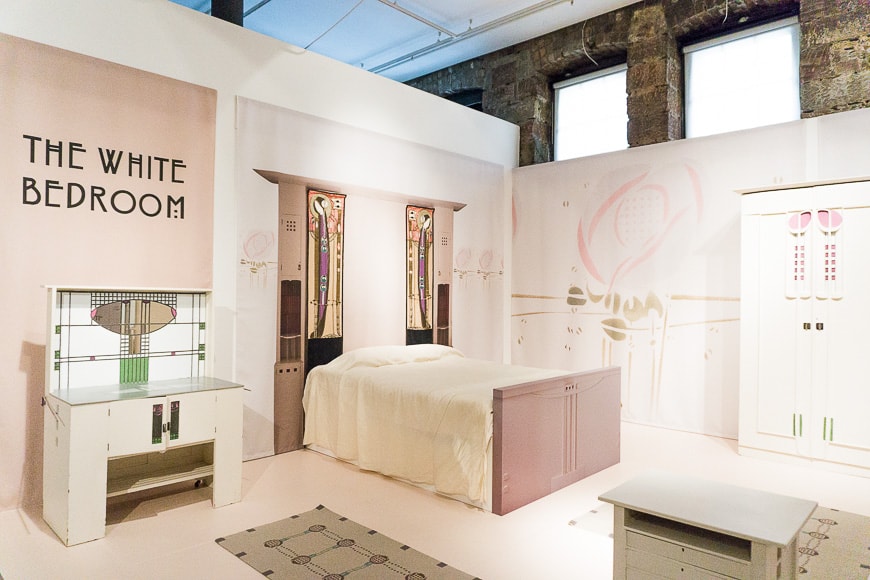
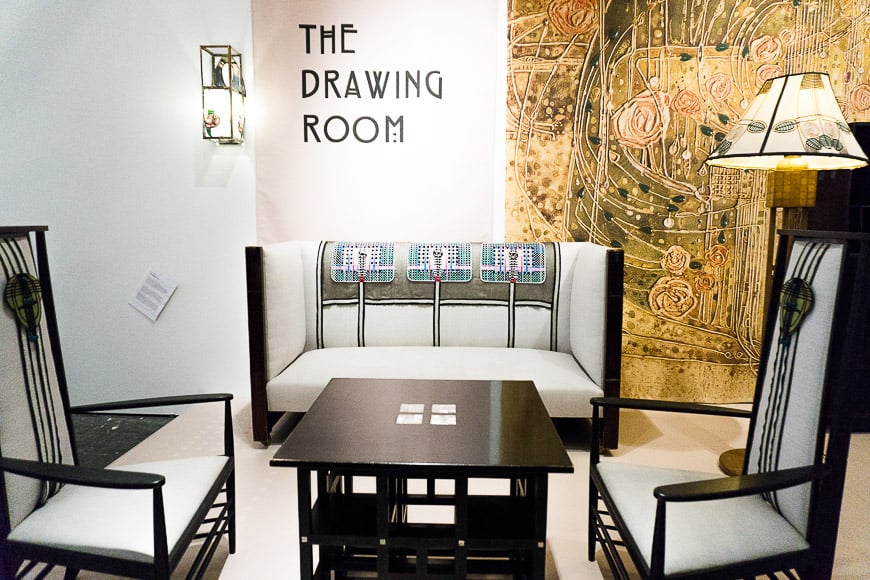
So interesting to read about Mackintosh and I have learnt so much about Glasgow already. Very much looking forward to exploring Glasgow in a few months and following your tour. Thanks so much for your insight into the life of a Glaswegian son.
Thanks! I find it really interesting as well, especially as it’s not the sort of thing I would normally do a lot of research on or know about. But there’s something about Mackintosh that draws you in! Hope you have a fantastic time when you visit Glasgow.